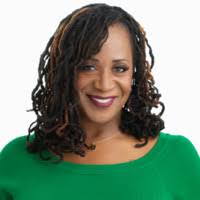The Importance of Healthcare Leadership That Reflects Patient Communities
MHA Search
For the 2023-2024 academic year, we have 112 schools in our MHAOnline.com database and those that advertise with us are labeled “sponsor”. When you click on a sponsoring school or program, or fill out a form to request information from a sponsoring school, we may earn a commission. View our advertising disclosure for more details.
“If you have people making decisions for the community that don’t know the community, don’t understand the community, are not of the community, then they’re making decisions without context and without understanding all of the implications down the line.”
Joy D. Calloway, MBA, MSHA, Interim Executive Director for the National Association of Health Services Executives (NAHSE)
The gaps in healthcare services are staggering in the United States, and they disproportionately affect women of color. African American women have significantly higher mortality rates during and after pregnancy. They also receive less treatment for pain management or cardiovascular issues. A 2017 study found women of color in the US die from cervical cancer, a preventable disease, at twice the rate of white women.
Part of the problem is a lack of access to preventative care: over a third of Hispanic women and African American women lacked health coverage in 2013, compared with only 12 percent of white women. But even when they do have access to care, women of color often feel unseen, unheard, and misunderstood. The disparities are so systemic and institutionalized that they immediately appeared in the nation’s response to the COVID-19 pandemic. The bias within the American healthcare system truly runs deep.
Another part of the problem is underrepresentation. The leadership of most healthcare systems and healthcare facilities does not adequately represent the communities those facilities serve. Women of color represent 18 percent of the US population, but less than 4 percent of C-level positions across all industries; those leadership roles are predominantly filled with white men (68 percent) and white women (19 percent) instead.
Read on to discover the enduring importance of having diverse and culturally competent leaders in healthcare, including how the National Association of Health Services Executives (NAHSE) is promoting these efforts.
Meet the Expert: Joy D. Calloway, MBA, MHSA

Joy D. Calloway is the Interim Executive Director of the National Association of Health Services Executives. She earned both her MBA and her MHSA from the University of Michigan. Drawing on her 25-plus year career in professional leadership, she’s now an in-demand speaker, trainer, and facilitator with a client list that includes the Michigan Primary Care Association, Healthy Start, and the American Heart Association. She is currently finalizing a workplace training curriculum that identifies and arrests unconscious bias throughout the HR lifecycle.
Why We Need Culturally Competent Leaders in Healthcare
“It’s really important in healthcare and in healthcare policy and in seeking healthcare that you have someone who truly understands you,” says Joy D. Calloway, Interim Executive Director for the National Association of Health Services Executives (NAHSE).
Early in her career, Calloway was working at a multispecialty health center in Northwest Detroit when the health system they were a part of suddenly made the decision to stop taking Medicaid Managed Care as an insurance plan. The turnaround time on that decision was fast, and very little attention was paid to the significant portion of the community that was about to become effectively uninsured. Calloway was the only Black person at the leadership table. She was also the youngest. But when she looked down at the affected zip codes, she recognized her own childhood zipcode among them. So she spoke up, and, while she wasn’t able to reverse their decision, she was able to slow down the process long enough to develop communication efforts and contingency plans that would better inform and prepare the community.
“If you have people making decisions for the community that don’t know the community, don’t understand the community, are not of the community, then they’re making decisions without context and without understanding all of the implications down the line,” Calloway says.
According to Nielsen surveys, women of color are more ambitious than any other demographic. But women of color face workplace challenges that other employees don’t: they can be excluded from leadership experiences, stereotyped as ‘token employees,’ questioned on their credibility, and held to higher standards than their colleagues. They often have to work three times as hard to get half as far as their white male colleagues. That’s a loss for healthcare systems and the communities they serve.
“There are so many priceless characteristics that Black women bring to a leadership discussion,” Calloway says. “We understand struggle and hard work. We understand what it takes to get to the top. We know how to get communities to come together and build consensus. We’re resilient.”
The Broken Rung on the Ladder
McKinsey’s annual Women in the Workplace report, a joint project with LeanIn.org, analyzed 329 companies and surveyed more than 68,500 employees. They found women of color underrepresented at every level of leadership. The chief reason cited as an obstacle to their progress was a ‘broken rung’ in the initial step up to manager, i.e., the first promotion to a position of leadership. This initial disparity then makes the talent pool for the next round of promotions even less diverse, and so on, all the way up to the top. The primary reason for that broken rung is believed to be unconscious bias.
“We all have unconscious biases,” Calloway says. “It’s the nature of who we are as human beings. We need to understand what those biases are, especially as it pertains to Black women leaders, so we can understand how those biases negatively impact the HR life cycle.”
According to the McKinsey report, about 42 percent of companies check for gender bias in performance reviews and promotions, but only 18 percent track for the combined biases of both gender and race. And while some HR departments may have gender or racial representation targets for senior leadership positions, they’re less likely to have those targets for junior level management positions, where the broken rung is located. They’re also significantly less likely to provide unconscious bias training for promotions and performance reviews at the junior level.
One insidious side effect of that unconscious bias at the junior level is that women of color are more likely to get vague, anodyne feedback from their managers. This is largely because managers are afraid of appearing ignorant, or worse; but it ultimately deprives the recipient of the feedback from valuable insights into how they can improve themselves and better meet the manager’s expectations. The organization, and its clients, suffer as a result.
For Black women in healthcare, climbing the healthcare ladder requires a balance of performance, image, and exposure. And, while performance and image are largely within one’s own control, the critical aspect of exposure often requires the help of others.
“Exposure means the right people seeing you doing the right stuff at the right time,” Calloway says. “But what happens is, people tend to give exposure to folks they’re most comfortable with, people that are most like them.”
Expanding Opportunities for Diverse Leadership
Through the course of her career, Calloway has had sponsors and champions: leaders who, while they didn’t share her demographic traits, stood up for her and put her name on the table for a position of higher responsibility. She credits this type of exposure as a key component of promoting women of color into positions of leadership.
“Unfortunately, many of us don’t have those champions in the room,” Calloway says. “Because right now, most of the room is white men. So we have to make sure we also have champions and mentors and sponsors and coaches that are white men who will help us get the exposure we need and the opportunities we want.”
In 1986, Dr. Richard Lichtenstein started the Summer Enrichment Program at the University of Michigan. As the professor of a graduate public health class, the idea was simple to him: it might be easier to reduce health disparities for people of color if the healthcare industry actually had more people of color leading it. Dr. Lichtenstein picked up the phone and started calling healthcare leaders in Detroit and Ann Arbor, getting their agreement to participate in providing undergraduate students of color with internship opportunities to prepare them for graduate study. Since its inception, the SEP has helped over 600 students launch their careers.
“I am an administrator today because of that man and that program,” Calloway says. “He was not just an ally, he was an accomplice.”
In activist terms, allies stand with the marginalized communities and amplify their voice. Accomplices break down the actual barriers to equality, helping to dismantle structural racism and structural sexism from the inside. Achieving health equity will require the services of both groups.
“We can’t do this by ourselves,” Calloway says. “There have to be people that will both stand with you and deconstruct with you.”
The Important Work of the National Association of Health Services Executives (NAHSE)
That message of collaboration is one echoed by Calloway’s colleagues at NAHSE. The 52-year-old professional association was founded to do three primary things: advance the healthcare administration careers of African American professionals; positively impact and improve health status in socioeconomically challenged communities; and be a voice in public policy around healthcare access and quality in the United States.
Today, NAHSE has 29 chapters and a 2,000-strong membership that includes the most senior Black health executives in the country. For both new and veteran healthcare professionals, NAHSE provides educational support and professional development in a variety of different modalities. The result is a pipeline of talent, growth, advocacy, and support.
“When you have the right people in place in leadership positions, they understand the importance of creating a pathway behind them for other people to come in,” Calloway says.
For community engagement, NAHSE works locally with individual communities to improve healthcare access; that might involve setting up health fairs, or driving voter registration, hosting diabetes workshops, or raising money to buy PPE for frontline responders of the COVID-19 pandemic. On the public policy front, NAHSE writes whitepapers, visits Capitol Hill, and educates and advocates with legislators.
There’s more to come. Part of Calloway’s mission is to introduce NAHSE to healthcare leaders in other areas. Organizations like Pfizer, Baxter, and the Leukemia & Lymphoma Society all employ Black professionals, and NAHSE is ready to help them become leaders in the fight for health equity.
“We want them to know about us, and to take advantage of our educational opportunities and our professional development opportunities, and to join us in this fight to make sure that everyone has high-quality, low-cost healthcare in this country,” Calloway says. “That’s who we are, and that’s what we do.”

